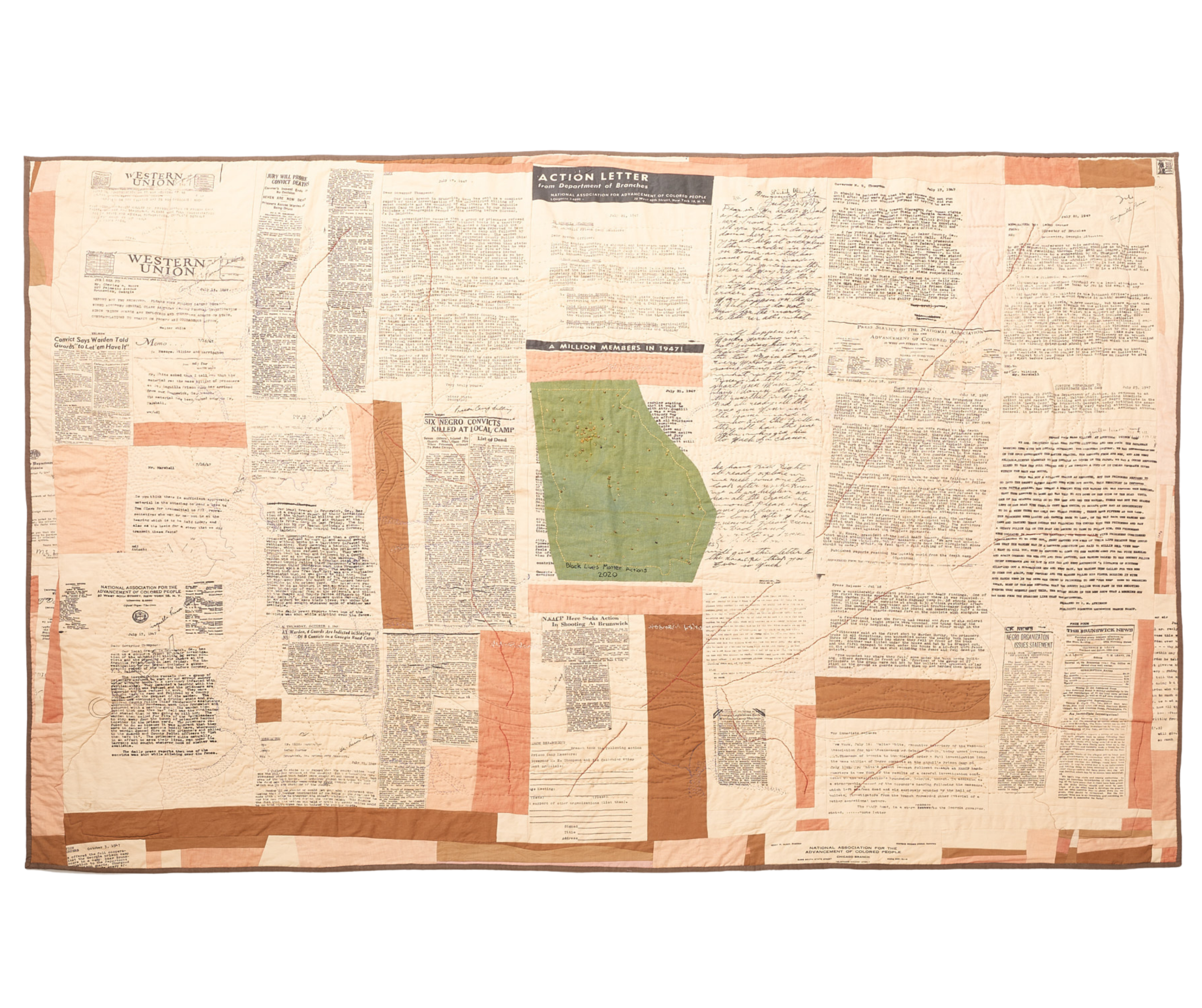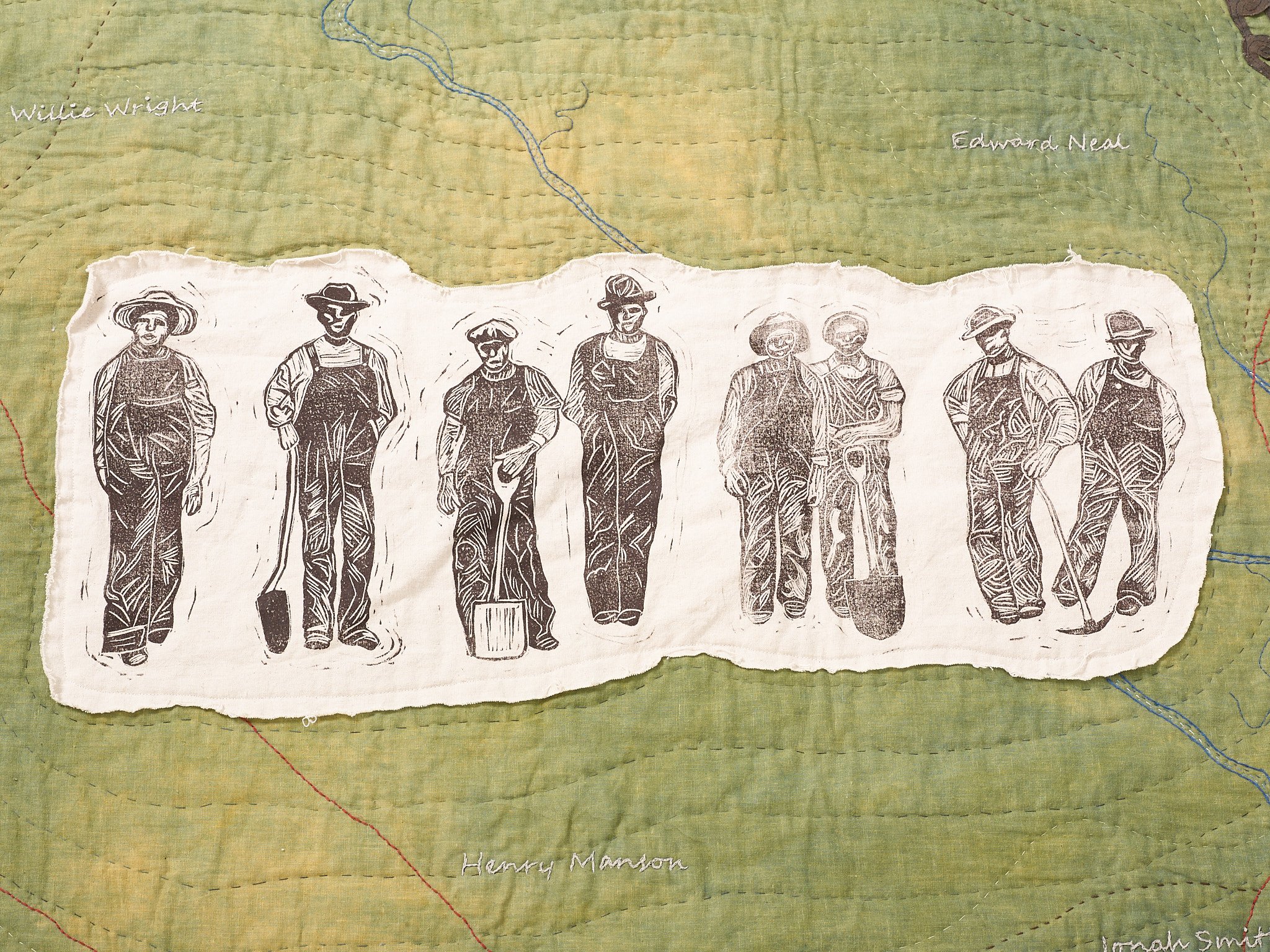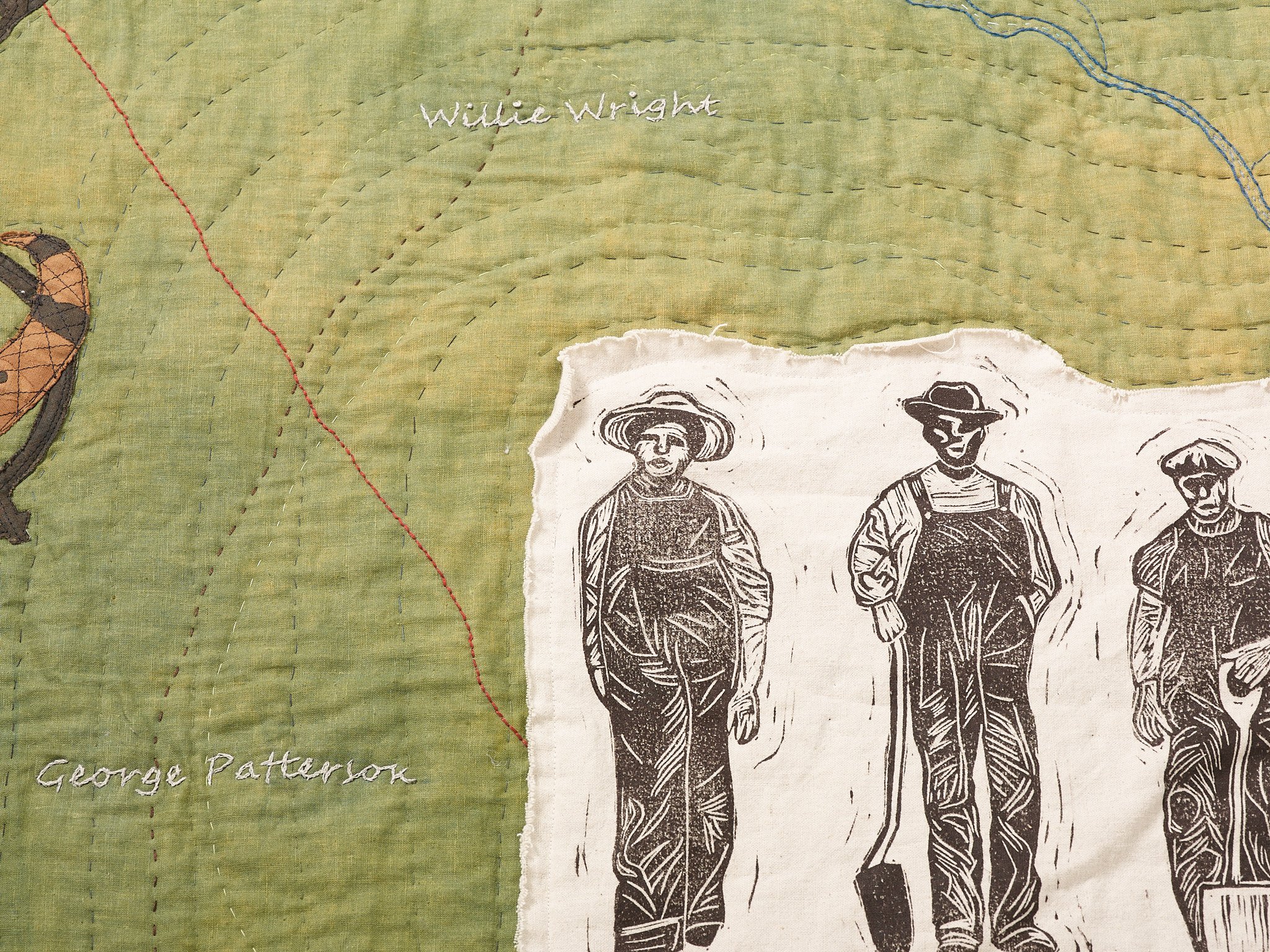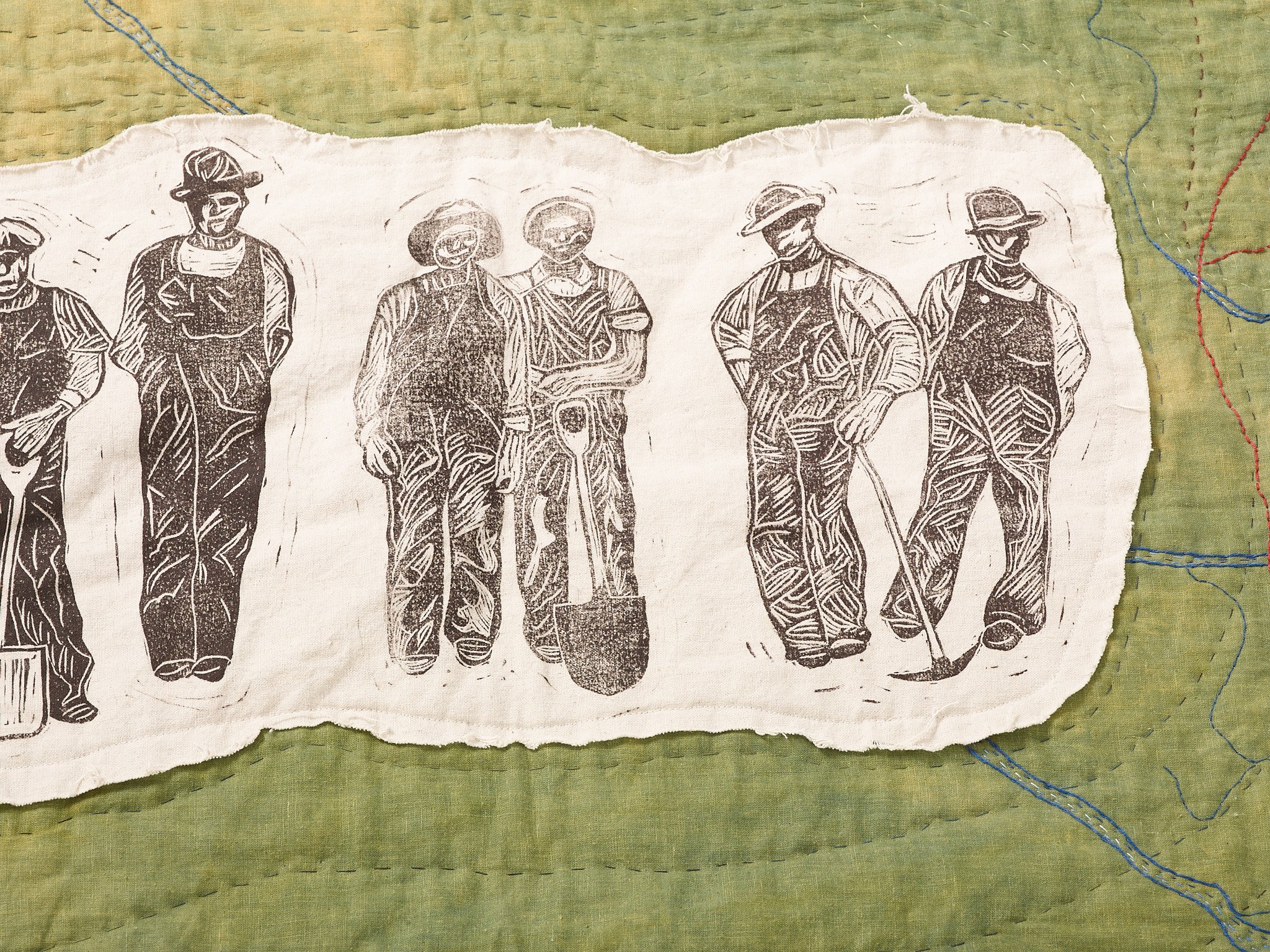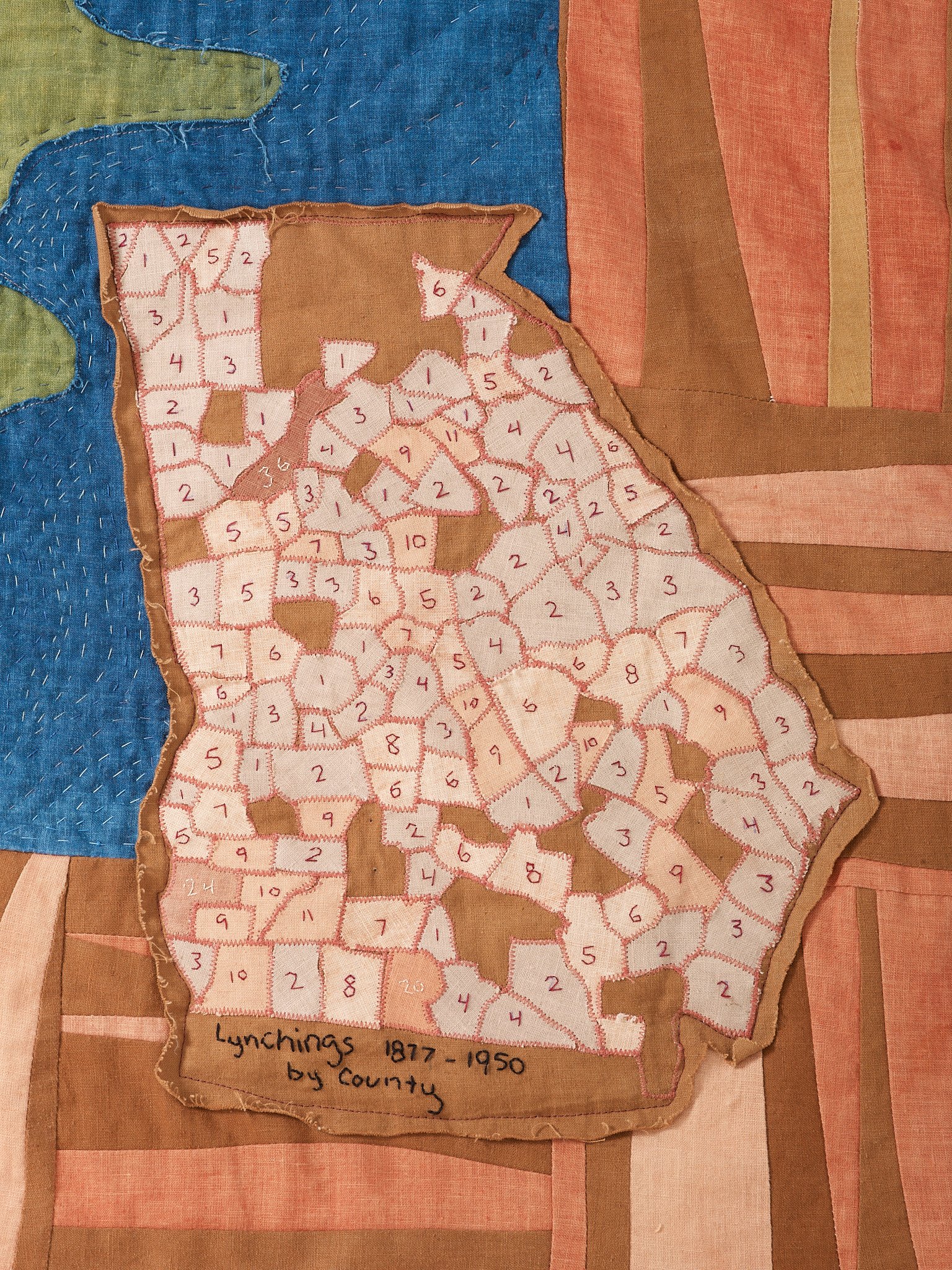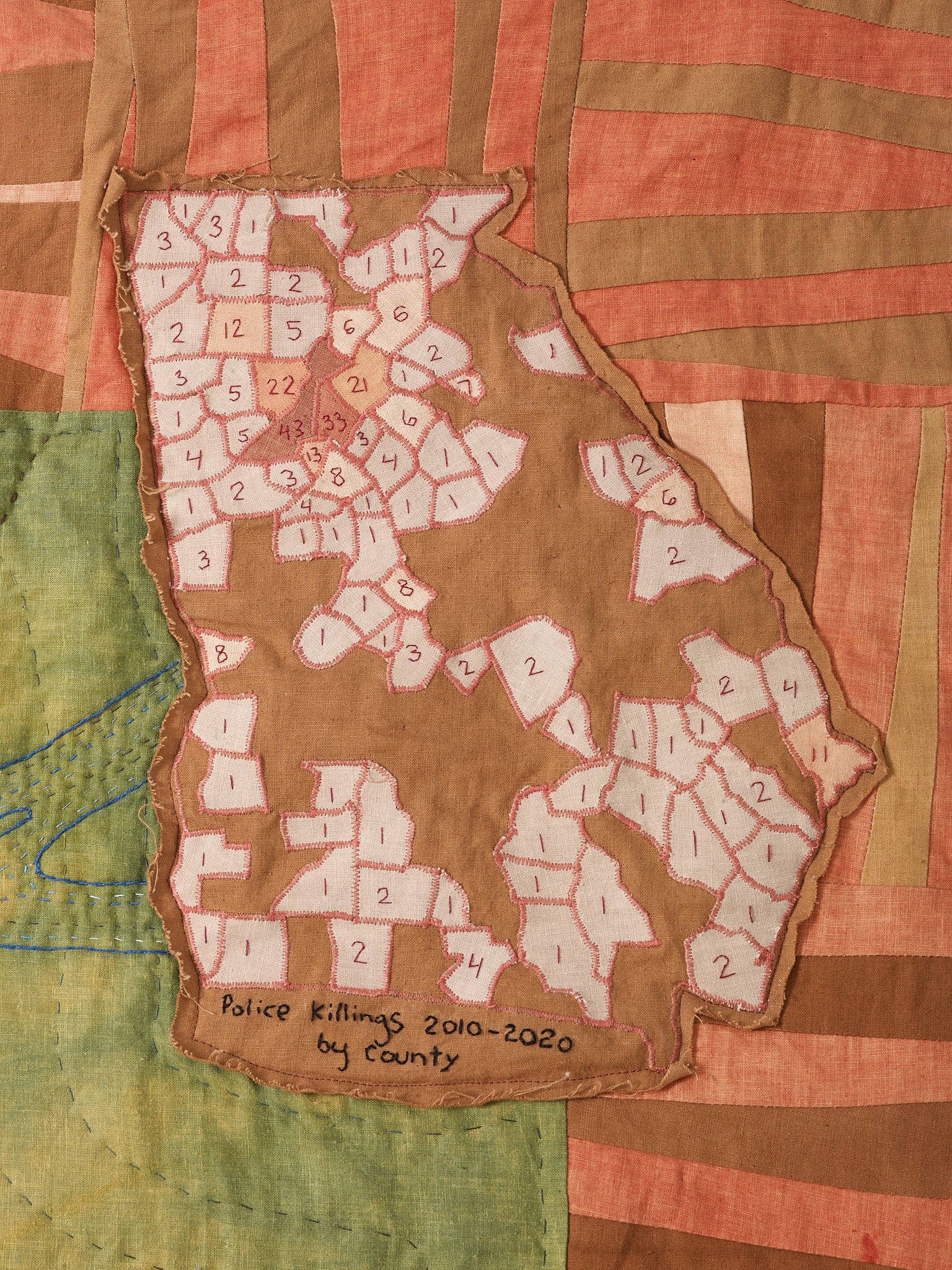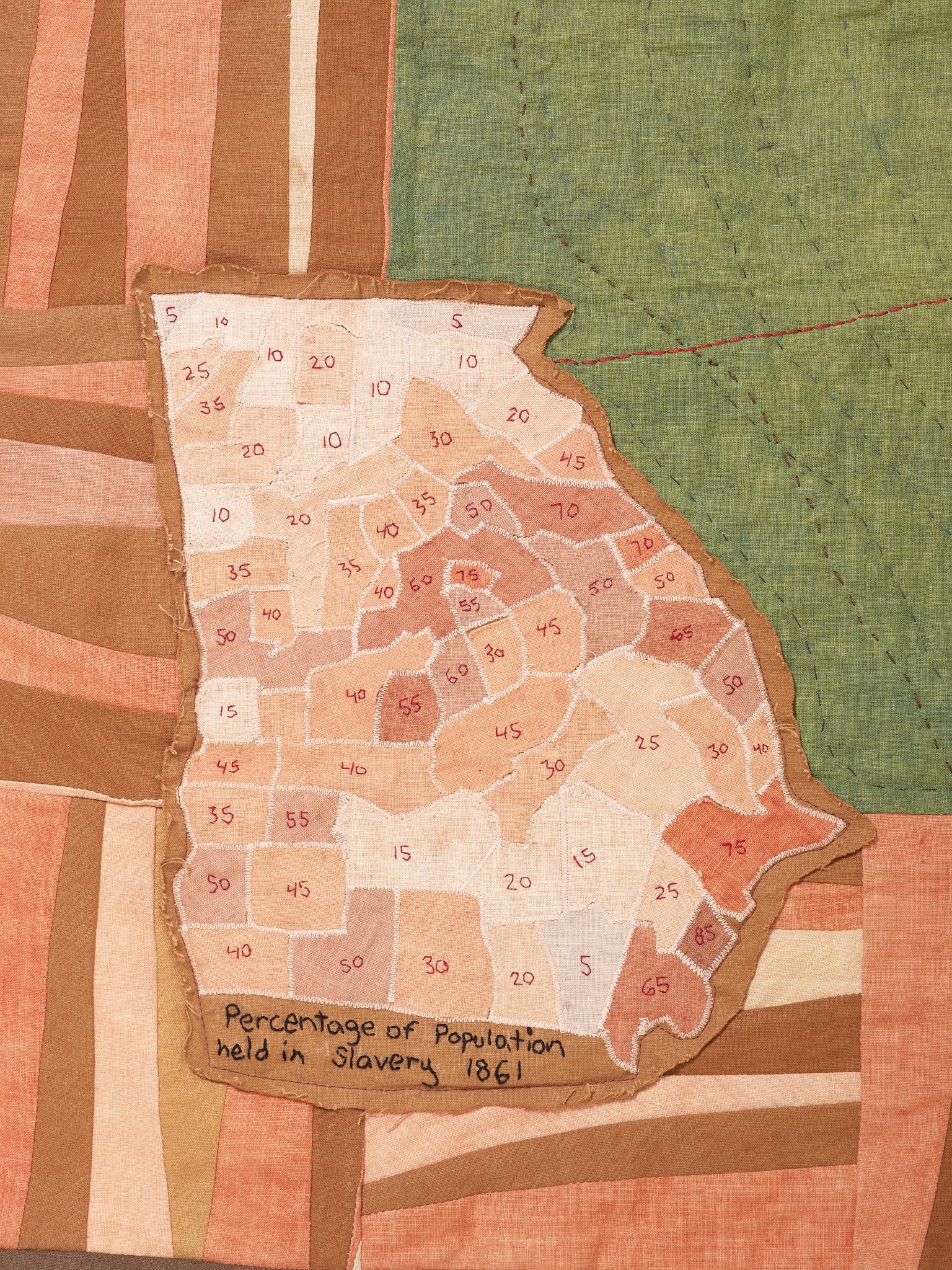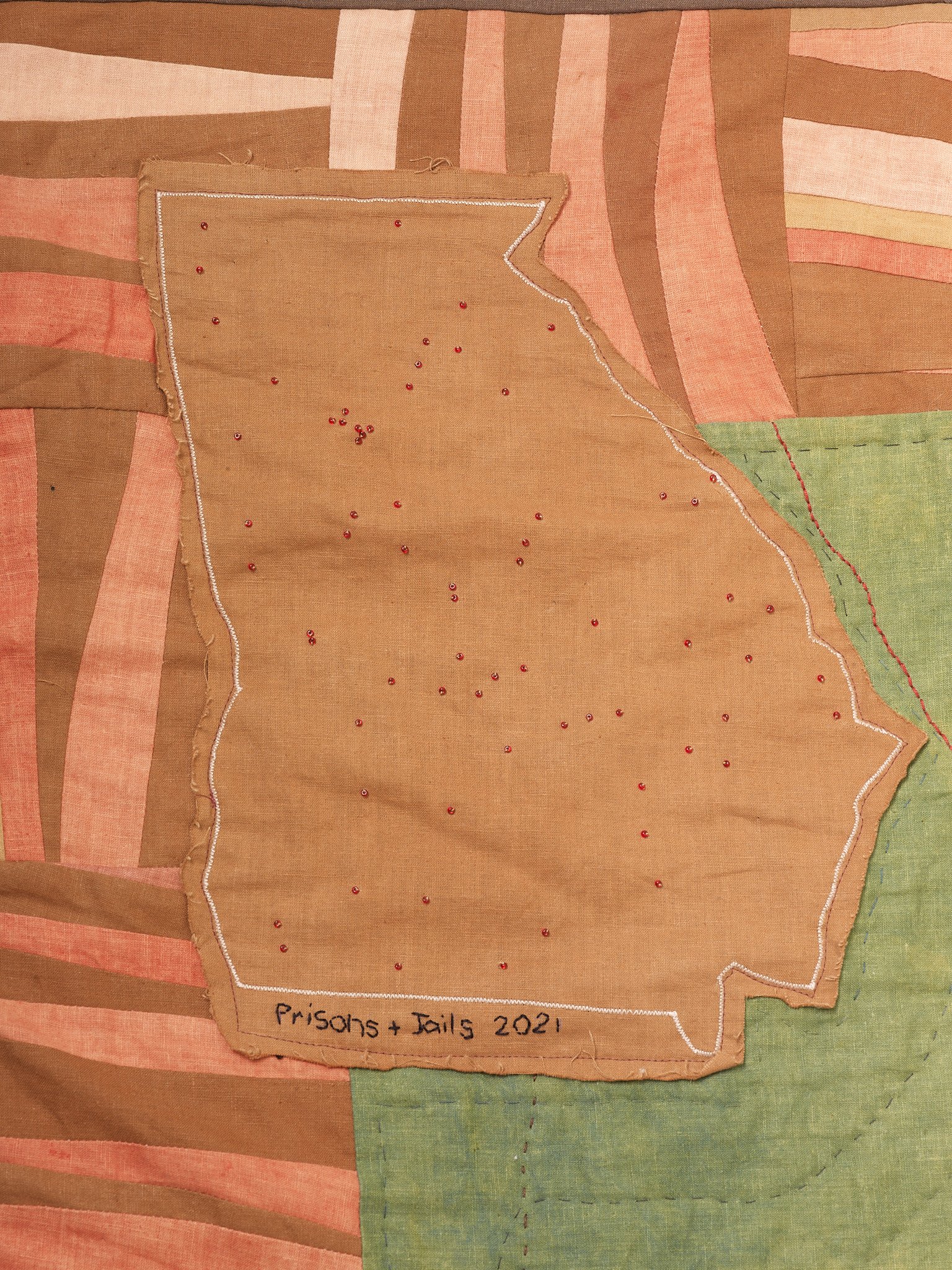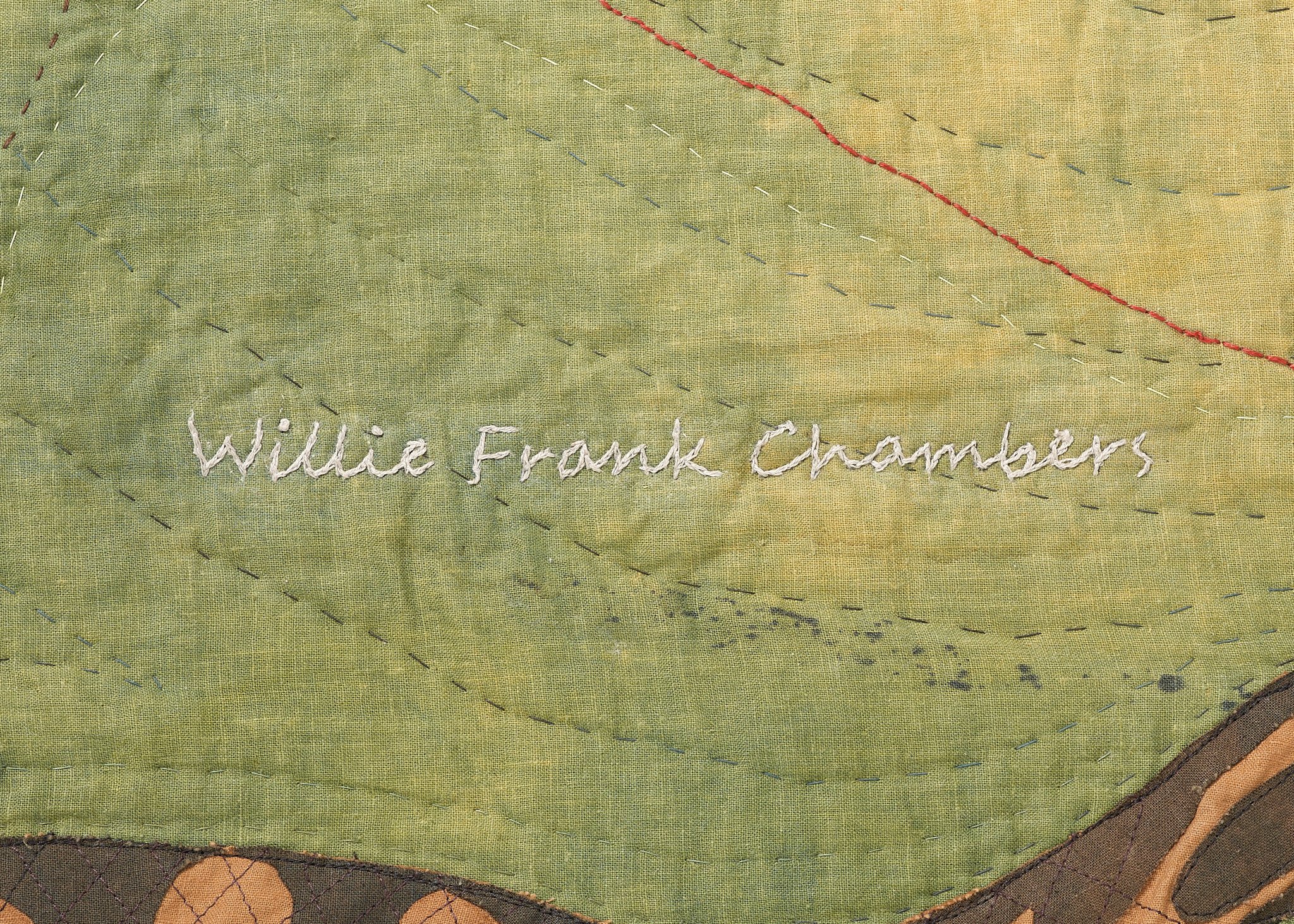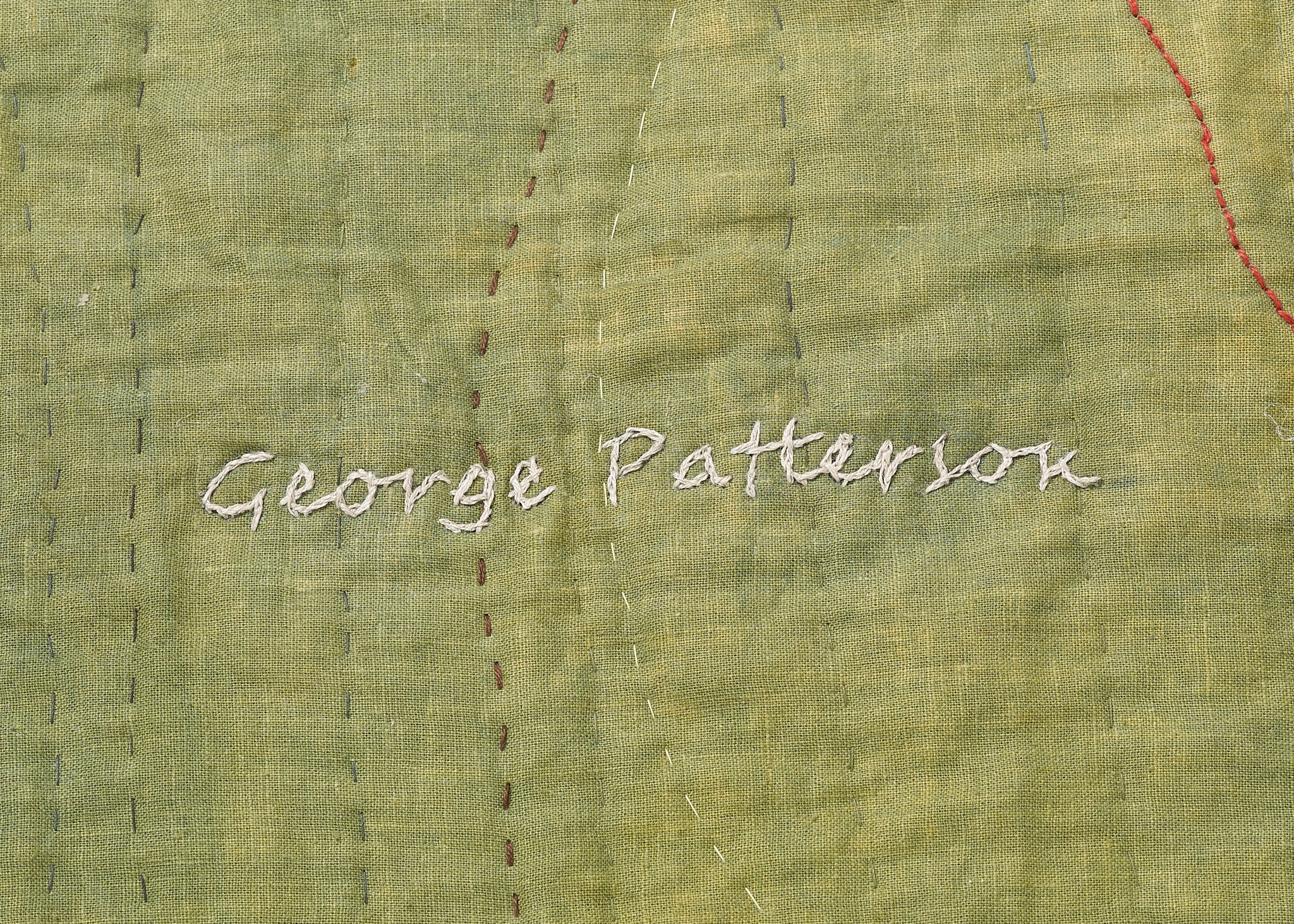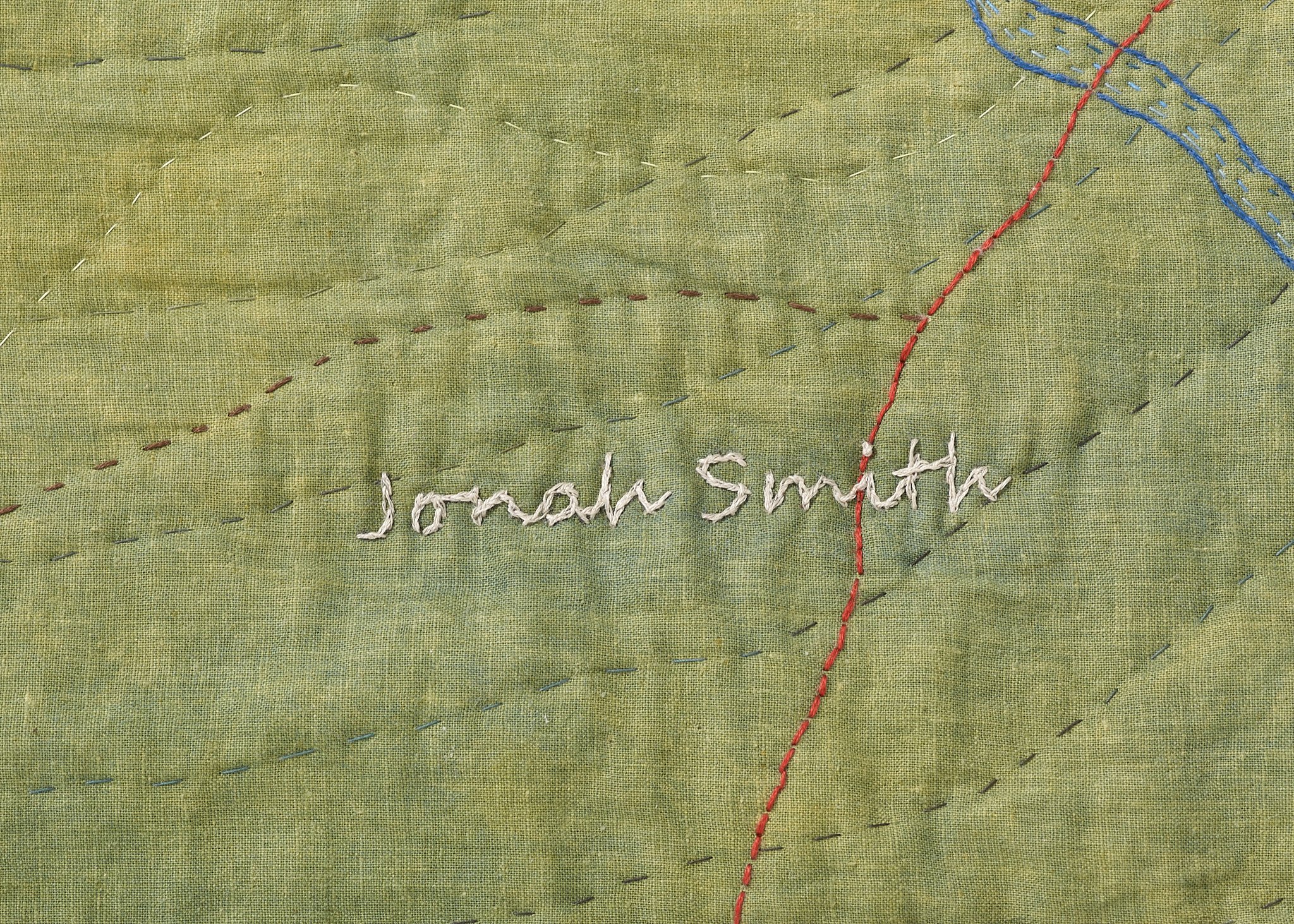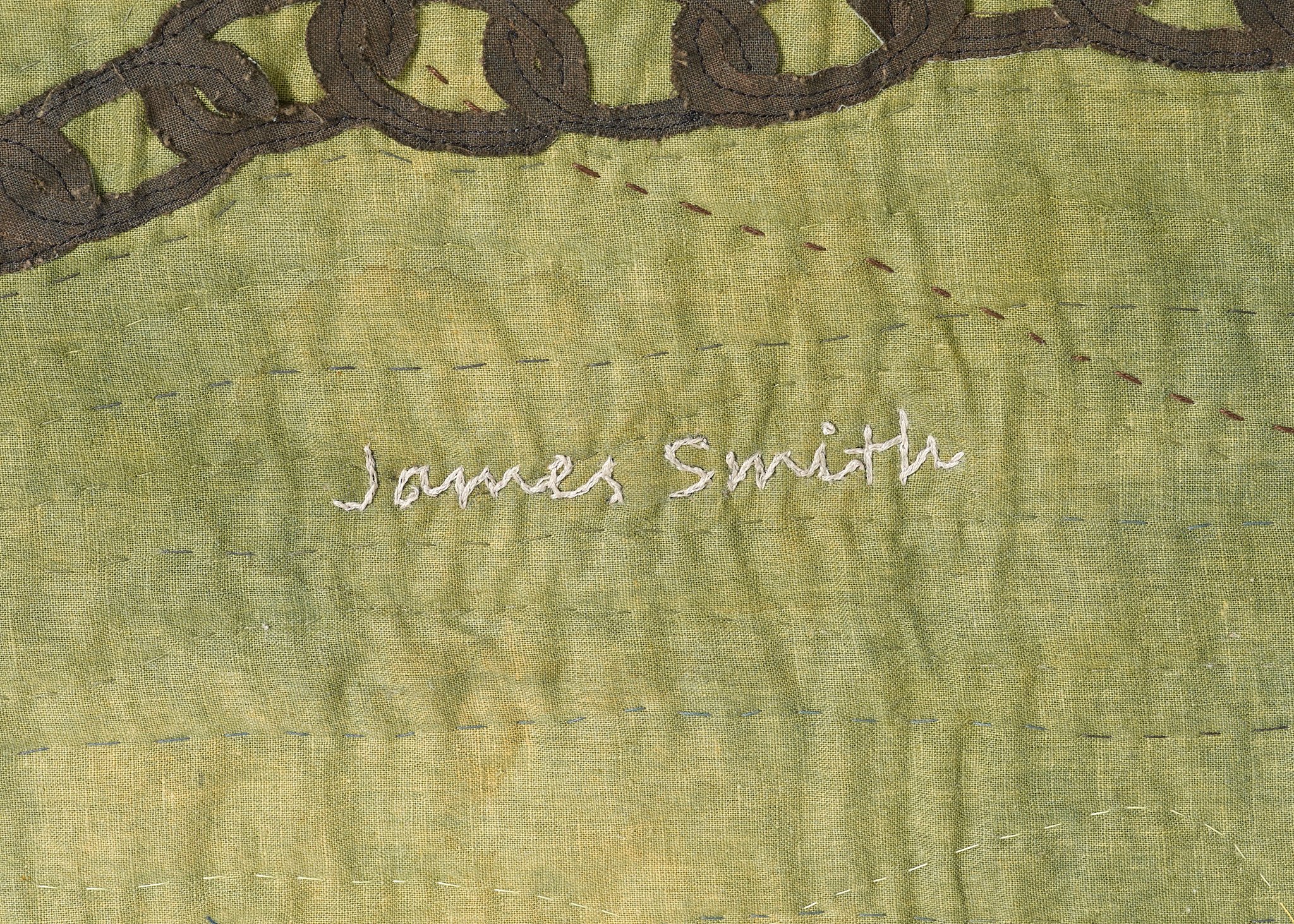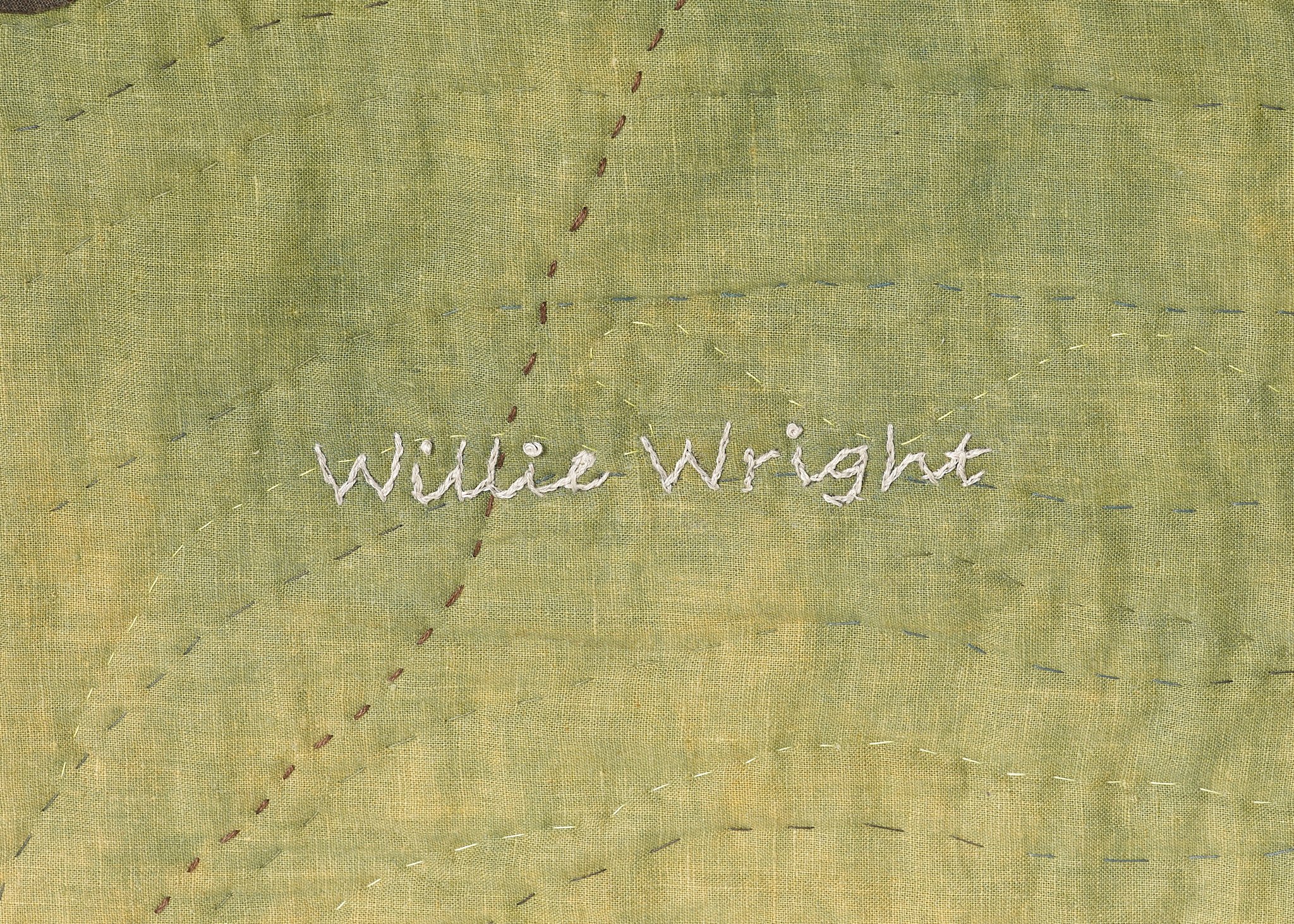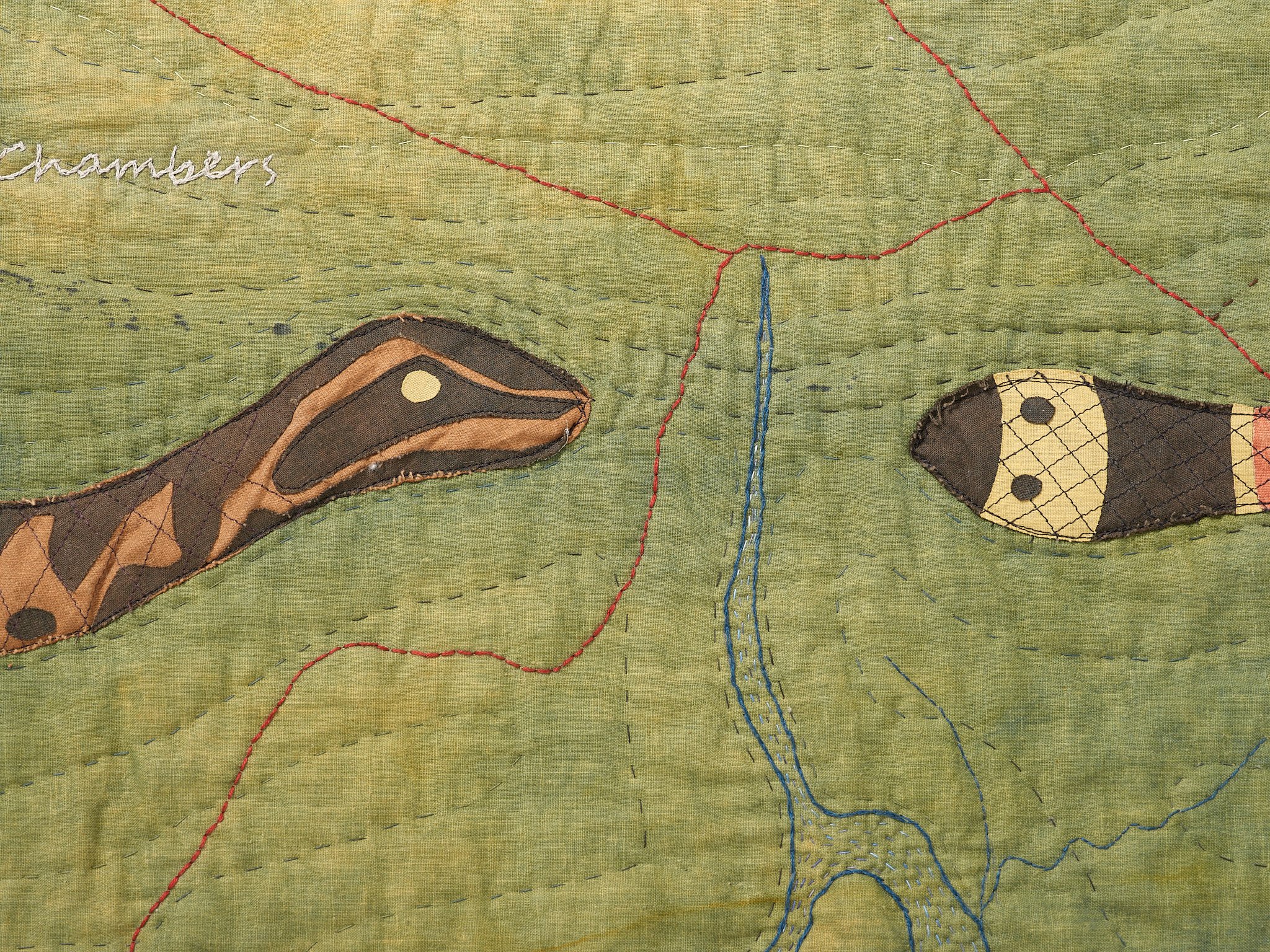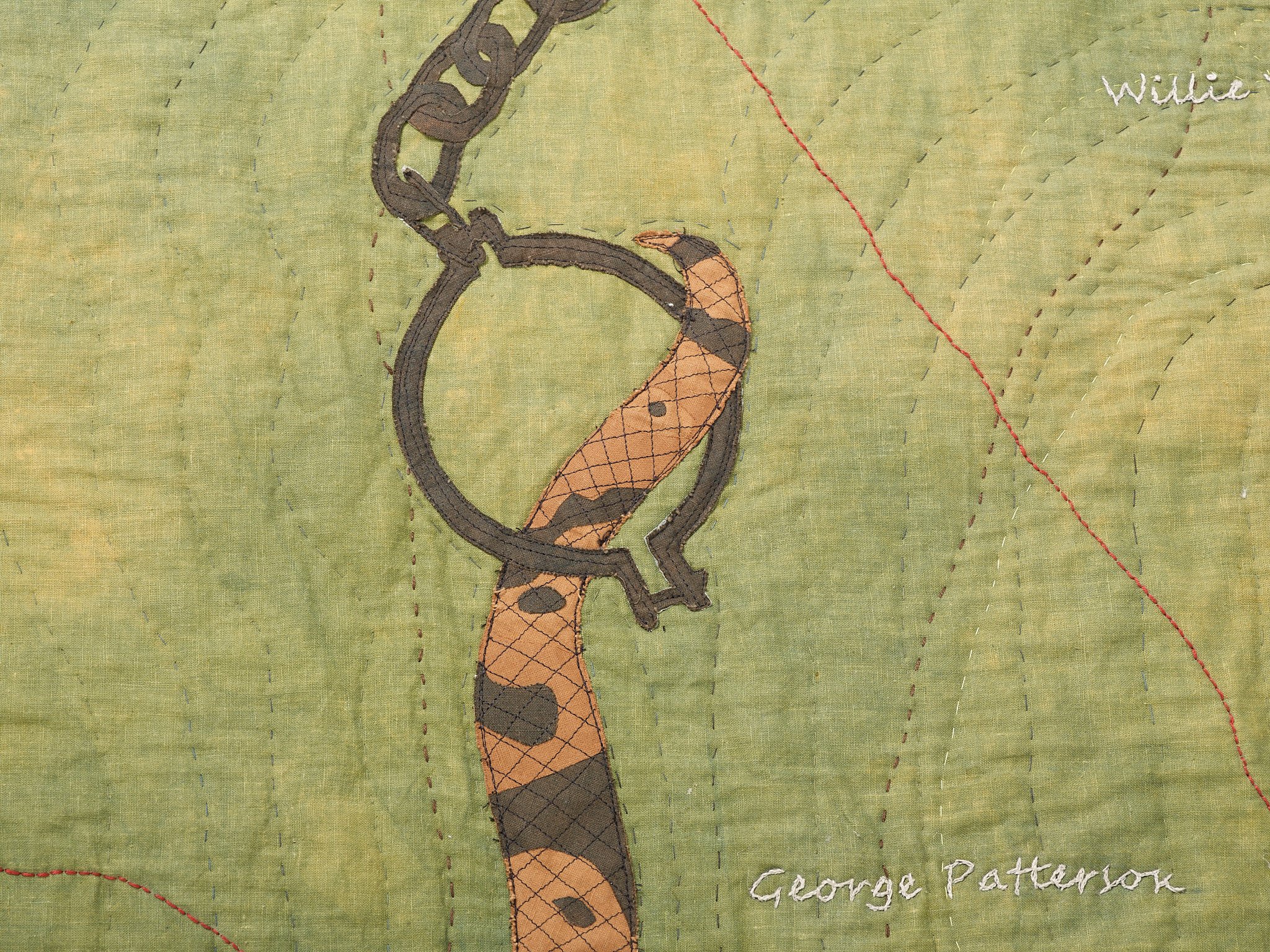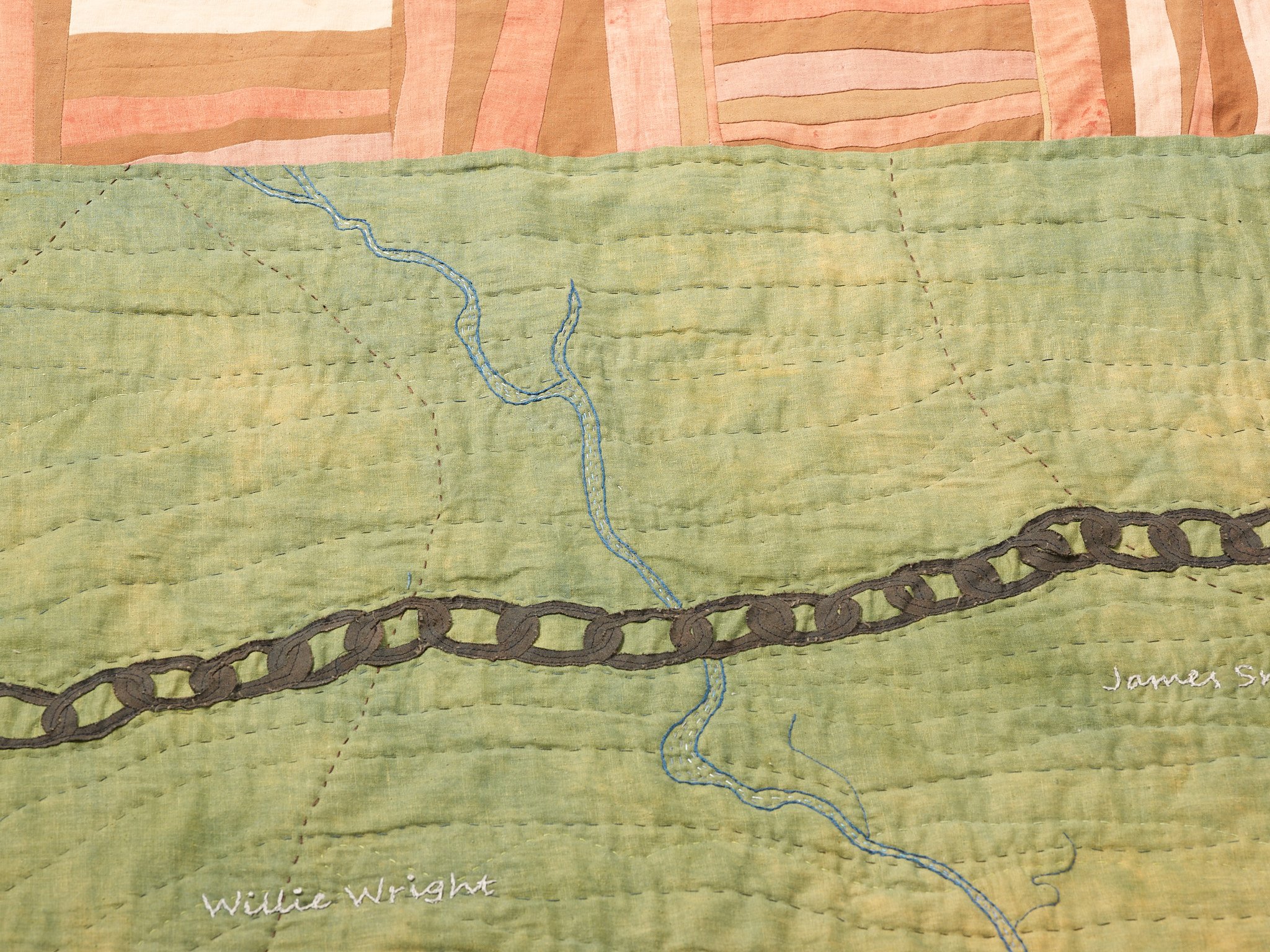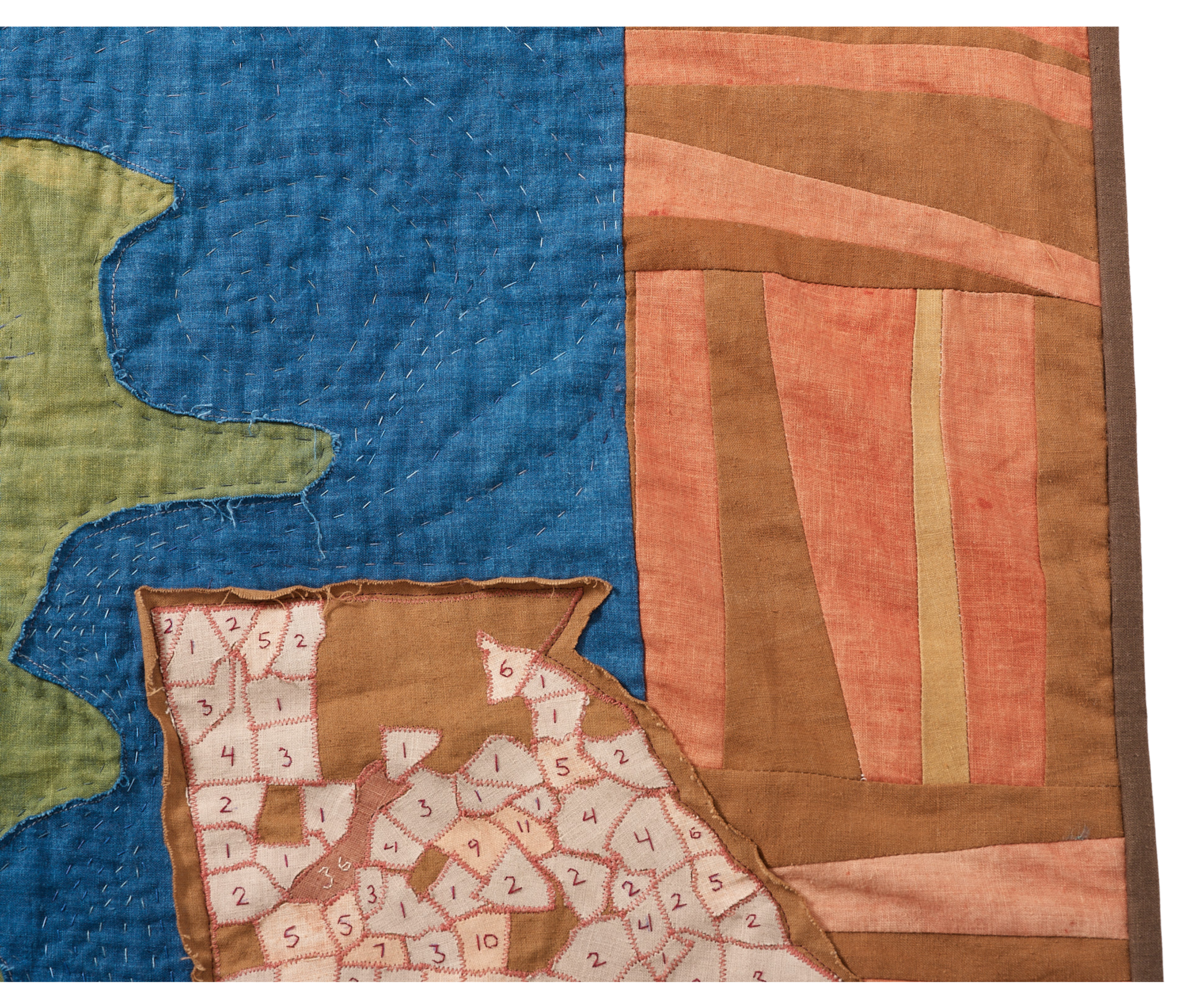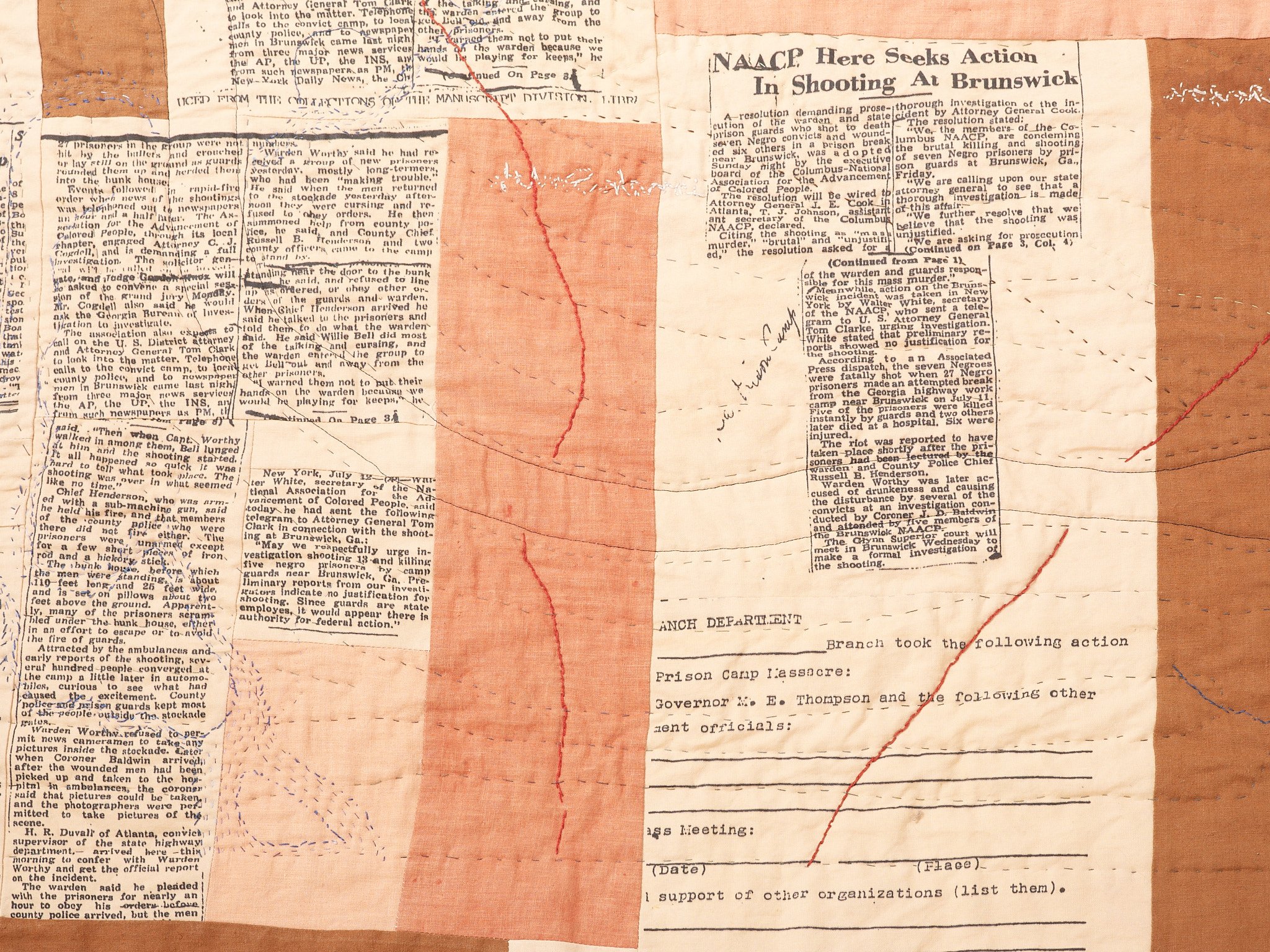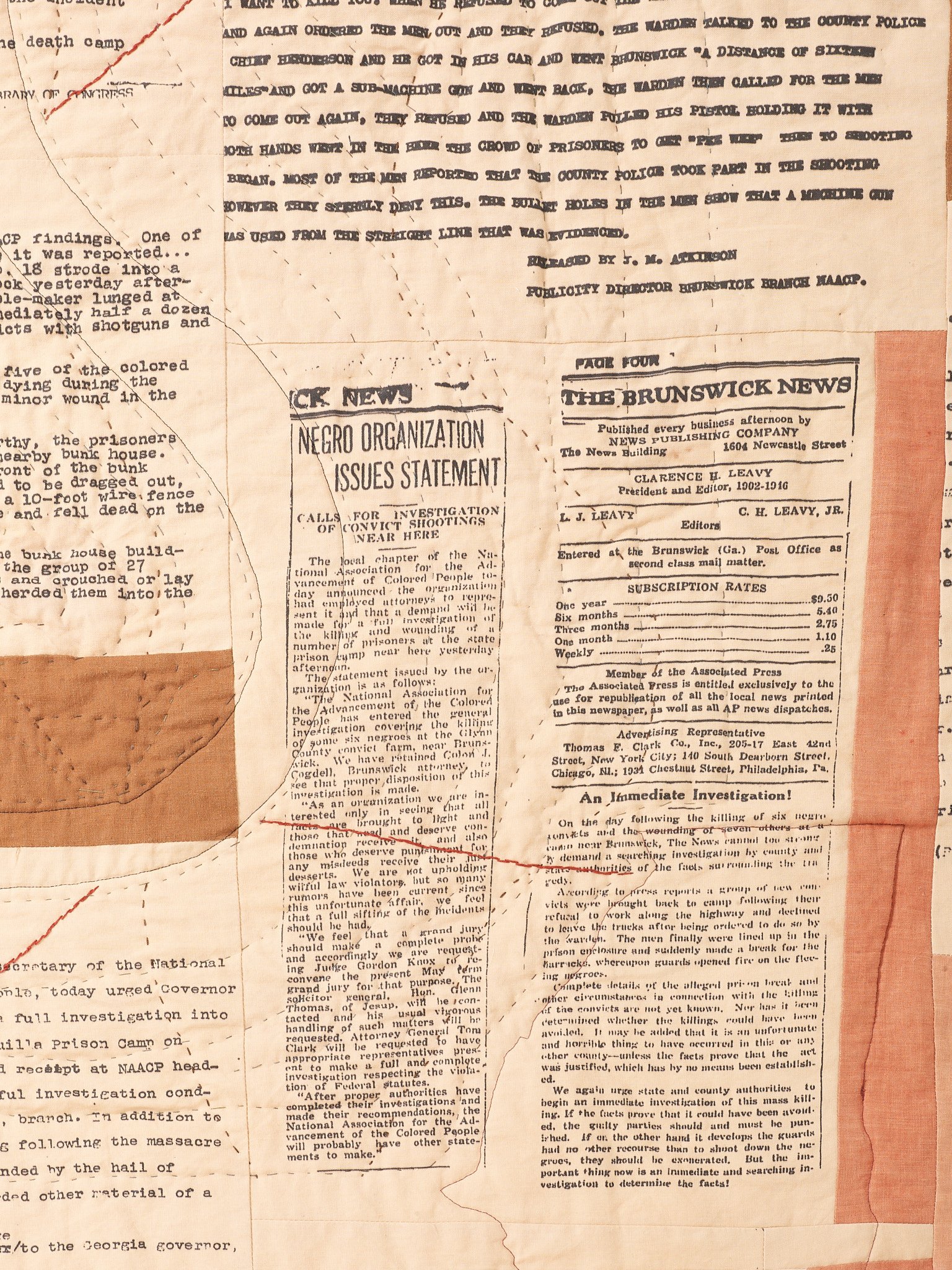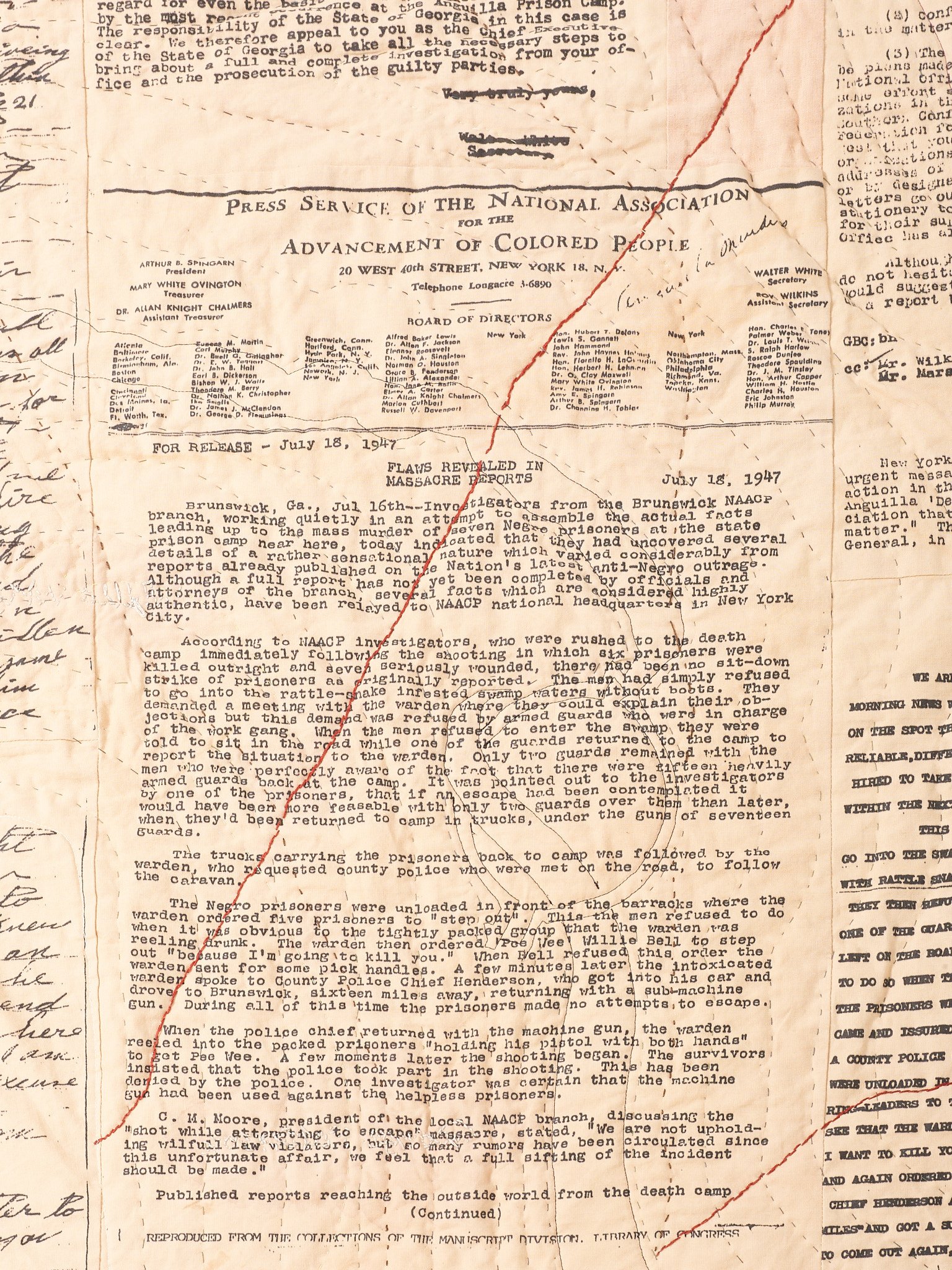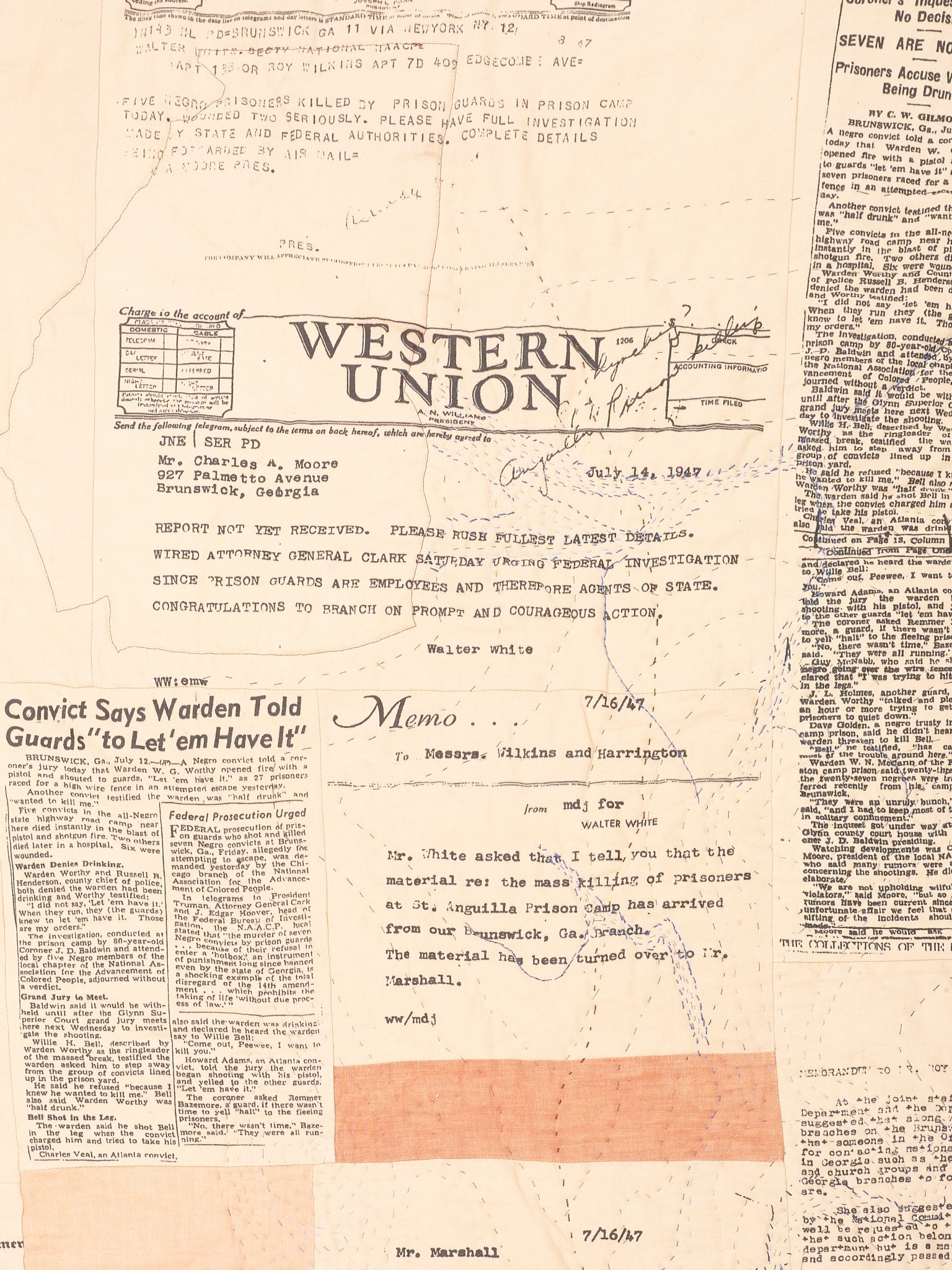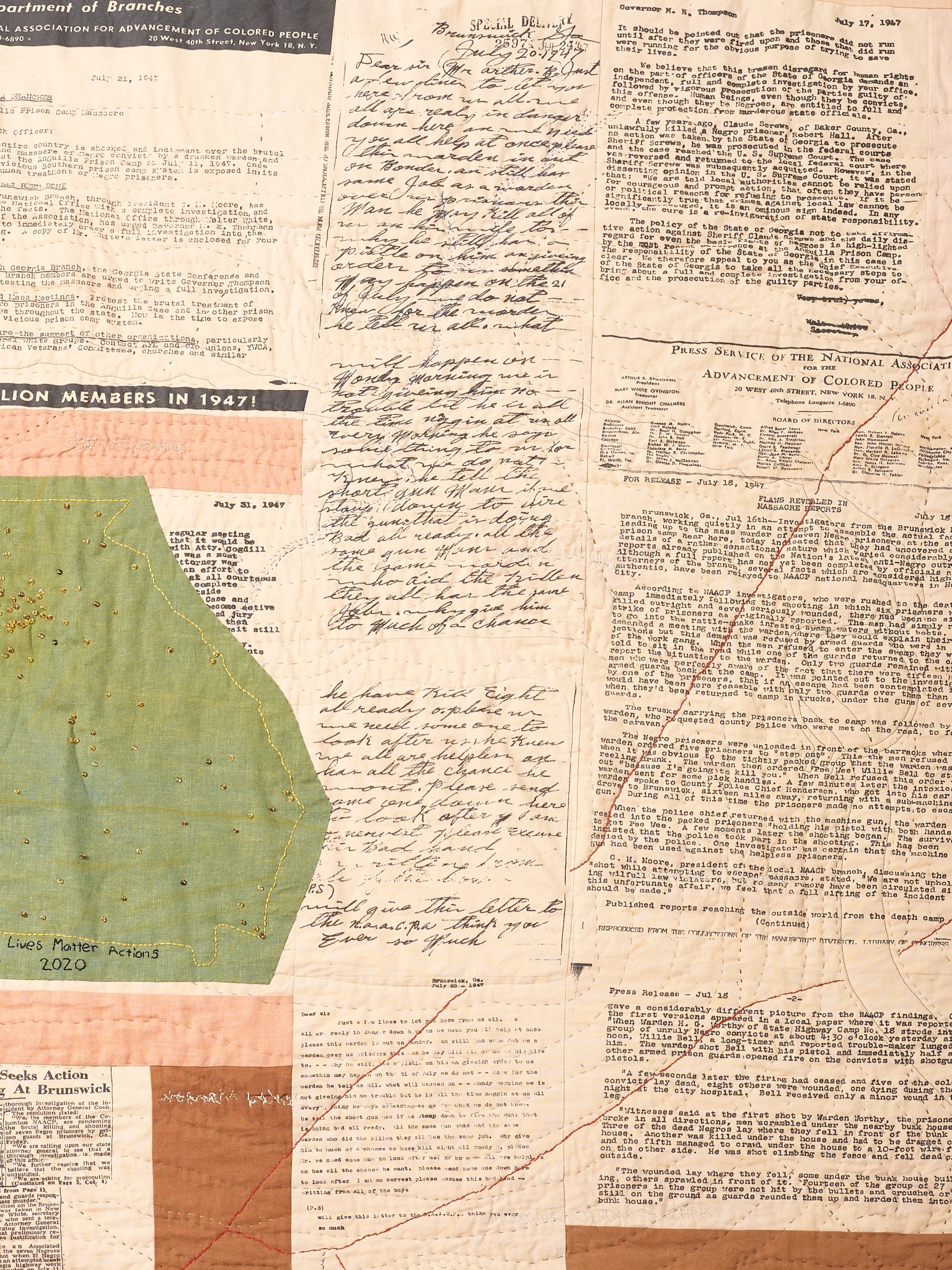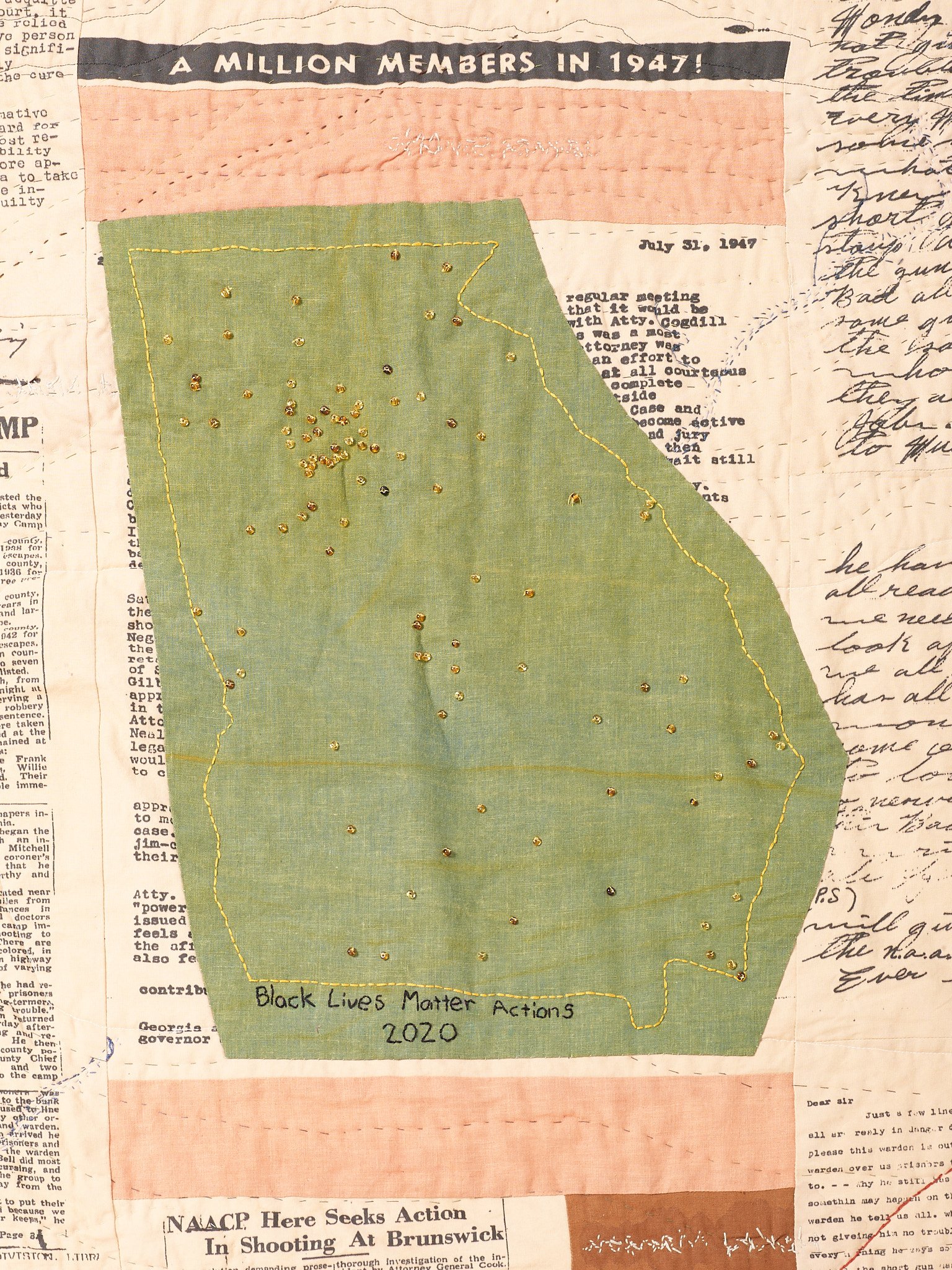
What happened at the Anguilla Prison Camp on July 11, 1947 was a massacre. Learn about this history through a handmade quilt, created by Rachel Wallis and Project NIA.
Photographed by Bryce Laughlin Photography

“When Mariame Kaba invited me to be the first Project NIA artist in residence, and create a quilt illustrating the history of a group of prison laborers killed by their captors in Georgia in the 1940s, I was both honored and overwhelmed. Every quilt tells a story. They tell the story of births, marriages, and deaths. They tell stories with the materials they are made of; the techniques used; the love, and time, and labor invested in their creation. And they have been used by incredible artists and makers for centuries to tell powerful stories of resistance, love, family, and loss in communities around the world.” - Rachel Wallis

On July 12, 1947, the New York Times published an article with the headline “Five Convicts Slain in Break in Georgia.” It opened: “Five Negro convicts were shot to death and eight others were wounded, two critically, in an escape attempt at a state highway work camp today, Warden H. G. Worthy said. The article continued, relying heavily on the warden’s account of events.
The initial account of what happened at Anguilla Prison Camp on July 11, 1947 turned out to be remarkable after all: It was a complete lie.
What actually took place at Anguilla was a massacre.

Read “They Mowed Them Down Like Wheat” — a zine written by Mariame Kaba and designed by Partner and Partners.

Images of the Anguilla Prison Massacre Quilt at
Stitch by Stitch: Conversations on Quilting, "Healing" and Abolition in Chicago, Illinois.







Photographs by Sarah-ji Rhee.

Discussion Questions
What parts of the quilt stood out for you? Why?
What messages, emotions, or ideas will you take away from learning about this quilt?
What questions do you still have about the Anguilla Prison Massacre?
What connections can you make between this quilt and the current context of hyper-incarceration and criminalization?
Does this quilt remind you of anything else you’ve read or seen? If so, how and why?
Why do you think the creators of this quilt made it? What do you think they are trying to do?

